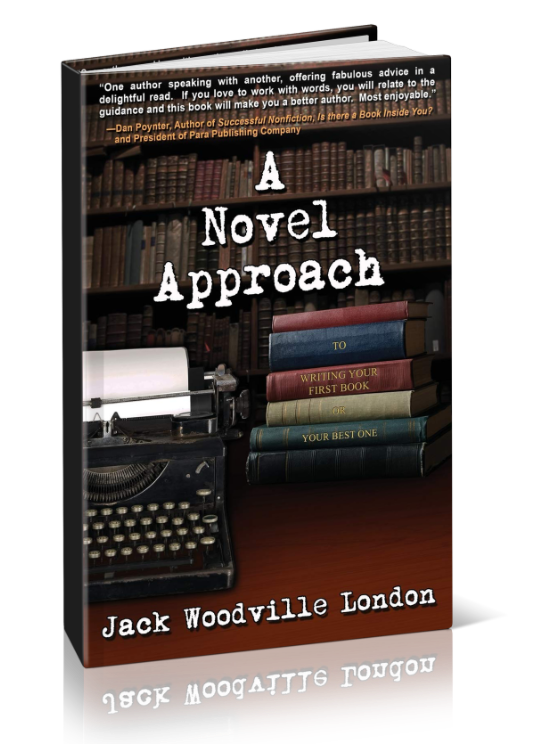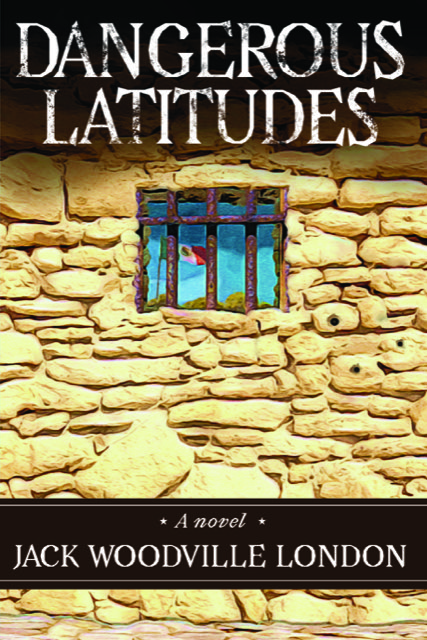Shades of the Deep Blue Sea
As their ship crosses the Pacific, headed to war in the Philippines, the bumbling Olafson looks for ways to kill Bart who is looking for ways to stay alive, all while the crew of the Renegade begins to believe that Bart might already have become a shade. But, the winds of war blow Bart and Olafson to the Spice Islands and the Japanese, and to Saya, who is fighting a war of her own. Can they survive in a jungle world of cannibals, poisonous birds, and a woman bent on revenge against the Japanese? Shades of the Deep Blue Sea is more than a historically-precise novel of World War II in the Pacific. It also is a riveting foray into dodging torpedoes, machine guns, and Japanese patrols that makes one wonder whether Bart could actually see what happened beforehand. A shade, after all, is more than just a change of color…. Shades of the Deep Blue Sea is another remarkable work of historical fiction from Jack Woodville London, author of Children of a Good War, winner of Best Historical Fiction, War and Military, 2018 and the French Letters Series.
Behind The Book
Behind the Book: Honolulu Dance Halls, Ghost Soldiers, Hollandia, Halsey's Typhoon, and the Ambon Island Japanese POW Camp Shades of the Deep Blue Sea follows American sailors Bart Sullivan and Petty Officer Olafson from Honolulu to the beach landing at Peleliu, into the most destructive cyclone in the war, and onto a South Pacific spice island teeming with cannibals and Japanese patrols. What is the story behind them? In December 1944 Admiral 'Bull' Halsey sailed the US Third Fleet east from the Philippines to refuel; he led his ships straight into the eye of one of the most devastating cyclones in naval history. Three destroyers sank with the loss of 790 men. More than 30 ships were damaged so badly that they had to be rebuilt. Many of the 13 aircraft carriers suffered fires from boilers and some 100 carrier planes were lost. The fleet searched for three days in hurricane seas and succeeded in pulling from the ocean some 93 sailors who had been washed overboard. The storm was quickly named Halsey's Typhoon. Pacific Command said that the cyclone had done far more damage than any enemy engagement. Even so, neither cyclones nor combat were the only dangers of the Pacific. Virtually none of the 1,400,000 Americans in the Pacific in World War II knew anything of the enormous island of New Guinea, its waters, lands, or islands. Most of them were under 24 years old; many spent their last days ashore in the dance halls of Honolulu, hunting for a girl to give them something to remember as they sailed into danger. Few of them had heard of New Guinea before the war. American sailors' and soldiers' introduction to New Guinea began with General MacArthur's island-hopping plan to attack Japanese bases on the Pacific side of the island. American navy troopships transported American soldiers to New Guinea to conduct a surprise attack on the Japanese by crossing the Owen Stanley Mountain Range. Most of the world's second largest island was mountainous jungle and thick rainforest. For more than five weeks the soldiers hacked at jungle to cross an impenetrable mountain pass in the monsoon season; when they reached the summit, tribes fled from them because they believed the troops were ghosts. The mountain crossing led to the defeat of the Japanese at Buna and Hollandia, a former Dutch shipping and administrative center of the spice trade that became an American naval base for the invasion of the Philippines. Inland New Guinea was occupied by indigenous tribes who lived in a Stone Age culture. In the remote western jungles, the Sawi tribe practiced cannibalism and hunted with bows, arrows, and spears. There are pitohui birds, whose poisonous feathers are deadly to people, and thorny devil walking sticks, carnivorous insects that spray a paralyzing vapor in self-defense. In all parts of New Guinea there are deadly kraits, enormous anaconda, huge crocodiles and monitor lizards that are close cousins of Komodo Dragons. Just off the west coast of New Guinea is Ambon island, the site of one of the most brutal Japanese prisoner of war camps of World War II. Japanese troops captured the Australian military Gull Force in 1942, taking over 1,100 prisoners, of whom only three hundred survived the war. The Japanese executed 239 immediately and imprisoned the rest, along with the Dutch colonists who had owned the spice plantations and merchant trade of the Spice Islands and New Guinea. Many of the Australian and Dutch prisoners of war were worked to death building an air base for the Japanese. Large numbers of prisoners, both military and civilian, were shipped to other Japanese labor sites where they died in equal numbers. More than half the Japanese officers and guards who ran the Ambon POW camp were convicted by the Australian War Crimes Commission and given death sentences or long prison terms for their brutality. After the war, when Australian forces liberated the Ambon POW camp, they found in its cemetery the grave of one American aviator. And, incredibly, there were two men on a nearby island who had been lost overboard in Halsey's Typhoon, almost 1,000 miles away. This is the story behind Shades of the Deep Blue Sea.See more books

A Novel Approach: To Writing Your First Novel, or Your Best One
Characters. Conflict. Dialogue. Story arc. Editing. You can do this! In many respects it’s like building a home or...
CONTINUE READING →
Book 3 of 3: Children of a Good War
Some bombs lie buried for decades before they blow up and hurt someone. Now, forty years after World War...
CONTINUE READING →




